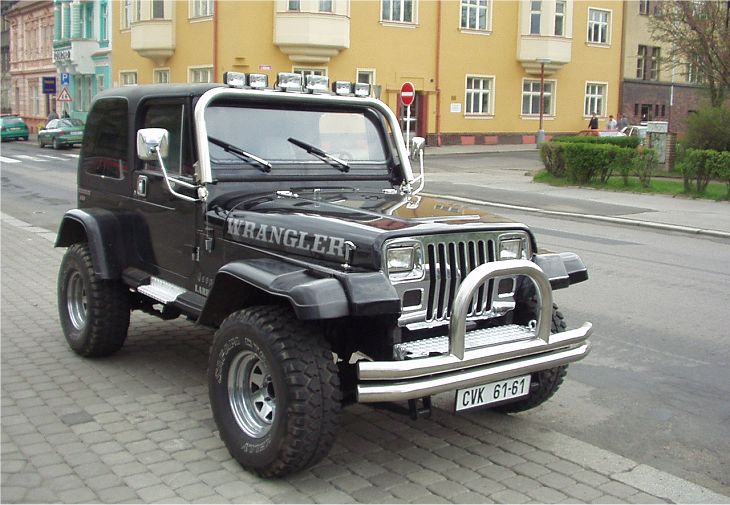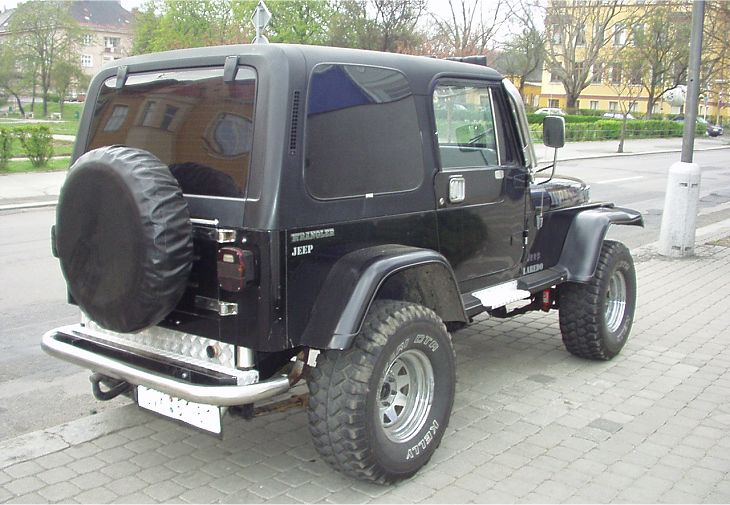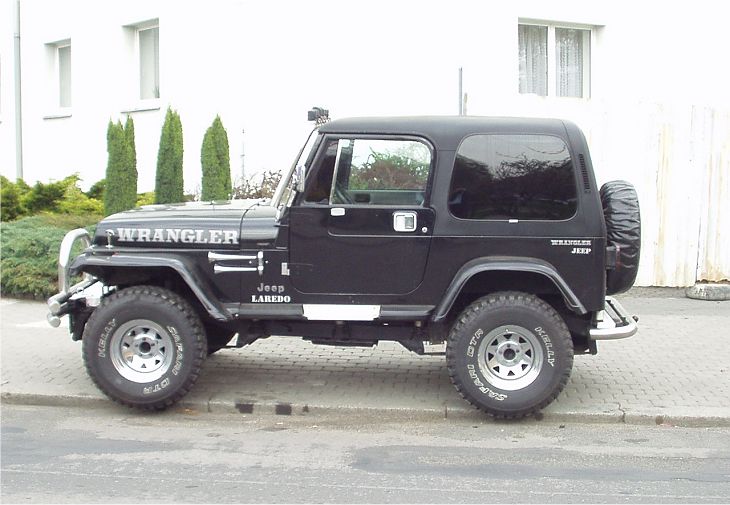Description
The Jeep Wrangler 4.0 represented the perfect synthesis of tradition and progress — a vehicle that combined the rugged soul of the classic Jeep with the power and refinement needed for a new generation of drivers. Introduced alongside the 2.5-litre variant in 1986 for the 1987 model year, the Wrangler 4.0 (YJ series) was powered by Jeep’s most celebrated engine of the modern era: the 4.0-litre AMC inline-six. This engine transformed the Wrangler from a capable off-roader into a confident, powerful all-rounder, equally at home on rocky trails, open highways, or in everyday use.
The YJ Wrangler, produced from 1986 to 1995, was the first Jeep to bear the Wrangler name, replacing the CJ-7 that had defined the brand for decades. It was developed by American Motors Corporation (AMC) with a clear goal — to retain the iconic Jeep toughness while improving on-road handling, comfort, and safety. The 4.0-litre model became the flagship of the range, embodying the best of Jeep engineering with a balance of brute strength and refinement that earned it an enduring reputation among enthusiasts.
Visually, the Wrangler 4.0 retained the unmistakable Jeep silhouette: a short wheelbase, upright windshield, removable doors, and exposed hinges. Yet its lines were slightly more modern and broader than those of its CJ predecessors. The most controversial design change was the adoption of rectangular headlights, a break from Jeep tradition that immediately set the YJ apart. Despite this, the Wrangler still looked every bit a Jeep — purposeful, tough, and instantly recognizable. The body was mounted on a robust ladder-frame chassis, with solid axles front and rear, and leaf springs for durability. Its proportions — 93.4-inch wheelbase and 65-inch track — gave it excellent balance between maneuverability and stability, essential for off-road performance.
At the heart of the Wrangler 4.0 was AMC’s 242 cubic inch (3,965 cc) inline-six engine, introduced in 1987. This powerplant became legendary for its strength, torque, and longevity. With fuel injection and an iron block mated to an aluminum head, it produced 177 horsepower and 298 Nm of torque, figures that gave the relatively light Wrangler outstanding pulling power and effortless acceleration. Known for its smooth, linear power delivery, the 4.0-litre engine was praised for its reliability and ability to run well beyond 300,000 kilometers with basic maintenance. Its deep, throaty note added to its character, making it one of the most beloved engines in Jeep history.
Transmission choices included a five-speed manual gearbox (Aisin AX15) or a four-speed automatic, both connected to Jeep’s Command-Trac part-time four-wheel-drive system with a two-speed transfer case. The 4.0’s generous torque meant it could cruise comfortably on the highway yet crawl over obstacles at low speed with absolute control. The gearing provided flexibility for both road and trail driving, and the drivetrain’s simplicity and durability made it easy to service anywhere — a hallmark of Jeep design since the beginning.
Off-road, the Wrangler 4.0 was a masterclass in balance and capability. Its short wheelbase allowed sharp turning angles and nimble maneuvering through tight forest trails, while the solid axles provided excellent articulation over rocks and uneven surfaces. The leaf-spring suspension was firm but predictable, offering stability on rough ground. Ground clearance was ample, approach and departure angles were steep, and the transfer case’s low range made the 4.0 a formidable climber. It could ford streams, cross dunes, and tackle steep, rocky paths with the same assurance as its military ancestors, yet do so with more comfort and ease.
On the road, the 4.0 transformed the Wrangler’s character. The inline-six gave it genuine highway capability, something the four-cylinder model lacked. Acceleration was brisk, and cruising speeds of 70 mph (113 km/h) were easily sustained. The ride remained firm — a reminder of its off-road priorities — but steering and handling were vastly improved over earlier CJ models. The wider track and refined chassis made it feel more planted and less prone to the top-heaviness that characterized older Jeeps.
Inside, the Wrangler 4.0 offered a more comfortable and user-friendly environment than its predecessors. The interior design was simple but better organized, with improved ergonomics and weather-resistant materials. The dashboard was modernized with large, easy-to-read gauges and better ventilation controls. The seats were more supportive, and options such as carpeting, full steel doors, a hardtop, and air conditioning made it viable as a daily driver. Despite these upgrades, it remained true to its utilitarian roots — everything was functional, durable, and easy to clean, including removable floor plugs for washing out mud after off-road excursions.
The Wrangler 4.0’s combination of power, reliability, and versatility quickly made it the favorite among Jeep enthusiasts. It was as comfortable exploring backcountry trails as it was commuting through town, embodying the idea that adventure could begin anywhere. The 4.0 engine also made towing and heavy-duty use practical, giving the Wrangler a broader range of applications — from recreational 4×4 to working utility vehicle.
As the YJ generation evolved through the late 1980s and early 1990s, incremental improvements refined the formula further. In 1991, the 4.0 High Output (4.0 HO) engine was introduced, raising power to 190 horsepower and improving fuel efficiency and emissions. The suspension was tuned for a slightly smoother ride, and safety upgrades included a stronger roll cage and, later, shoulder belts for rear passengers.
By the time production ended in 1995, the Wrangler 4.0 had become a legend. It successfully preserved the mechanical honesty of the original Jeep while ushering the brand into the modern era. It was the model that proved a Jeep could be both rugged and refined — equally capable of climbing mountains and running errands.
Today, the Jeep Wrangler 4.0 is regarded as a modern classic. Its 4.0-litre inline-six engine remains one of the most respected in off-road history for its torque, durability, and mechanical simplicity. Many enthusiasts consider it the definitive Wrangler — the last Jeep to fully embody the traditional mix of mechanical toughness, compact size, and unfiltered driving experience before later generations added greater sophistication.
The Wrangler 4.0 was, in every sense, the inheritor of the original Jeep’s DNA. It offered authenticity, capability, and a sense of adventure that few vehicles have ever matched. Whether splashing through rivers or cruising down the highway with the roof off and the wind in its grille, the 4.0 carried forward the spirit that began in 1941 — the spirit of freedom, resilience, and the enduring call of the open road.


